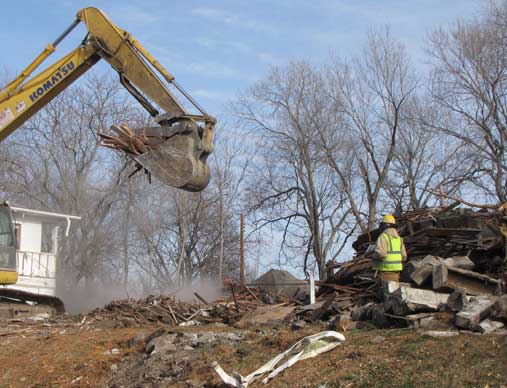 Dangerous buildings have long cropped up faster than the city can knock them down, but officials now fight with a targeted attack and doubled funding.
Dangerous buildings have long cropped up faster than the city can knock them down, but officials now fight with a targeted attack and doubled funding.
Demolition money in the new budget goes to the area around the new east patrol station and to the Green Impact Zone.
While the amount stays about the same as in the current budget, funds from the half-cent park sales tax doubled it last year. It went from about $800,000 at the start of last fiscal year to about $1.7 million.
Officials hope that allows progress against dangerous buildings that have increased by about 100 a year since 2010.
There were 894 in 2010 and 1,200 last year, said Nathan Pare, property conservation manager.
Many are abandoned or foreclosed houses stripped of copper, plumbing and reduced damaged husks, he said. With the foreclosure crisis abating, officials hope that problem will fade.
“We’re seeing more and more homeowners doing renovations or demolishing on their own now,” he said.
Meanwhile, he said, it makes sense to continue targeting demolitions to where construction and improvements are happening, like the Green Impact Zone and the area surrounding where the east patrol and crime lab are under construction.
“It’s trying to pool tax dollars together for the biggest impact,” Pare said.
At the same time, there are now 1,170 dangerous buildings citywide, he said, and he understands how people feel: “The most important dangerous building, the one that is the worst one, is the one next to your house.”
The budget that starts May 1 targets 94 buildings around the patrol area from Bruce R. Watkins Drive to Benton Boulevard, 23rd to 31st streets. It will also finish demolishing what is left of about 140 dangerous buildings in the green impact zone, which is roughly Troost to Prospect avenues, 39th to 51st streets.
The city is also working toward more demolition money, he said, along with a five-year plan to demolish 1,000 buildings.



Who’s talking